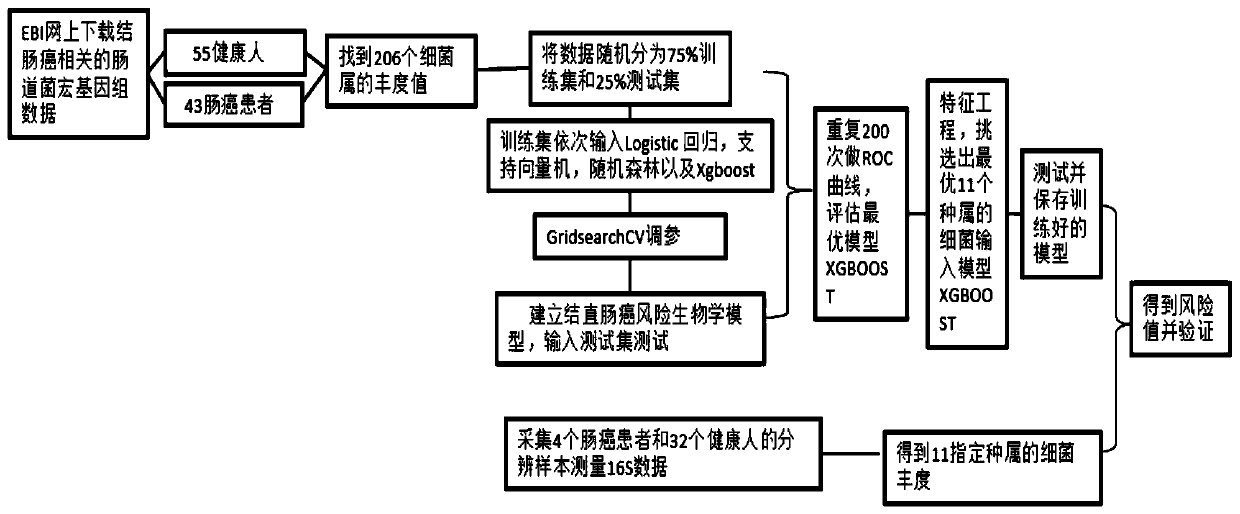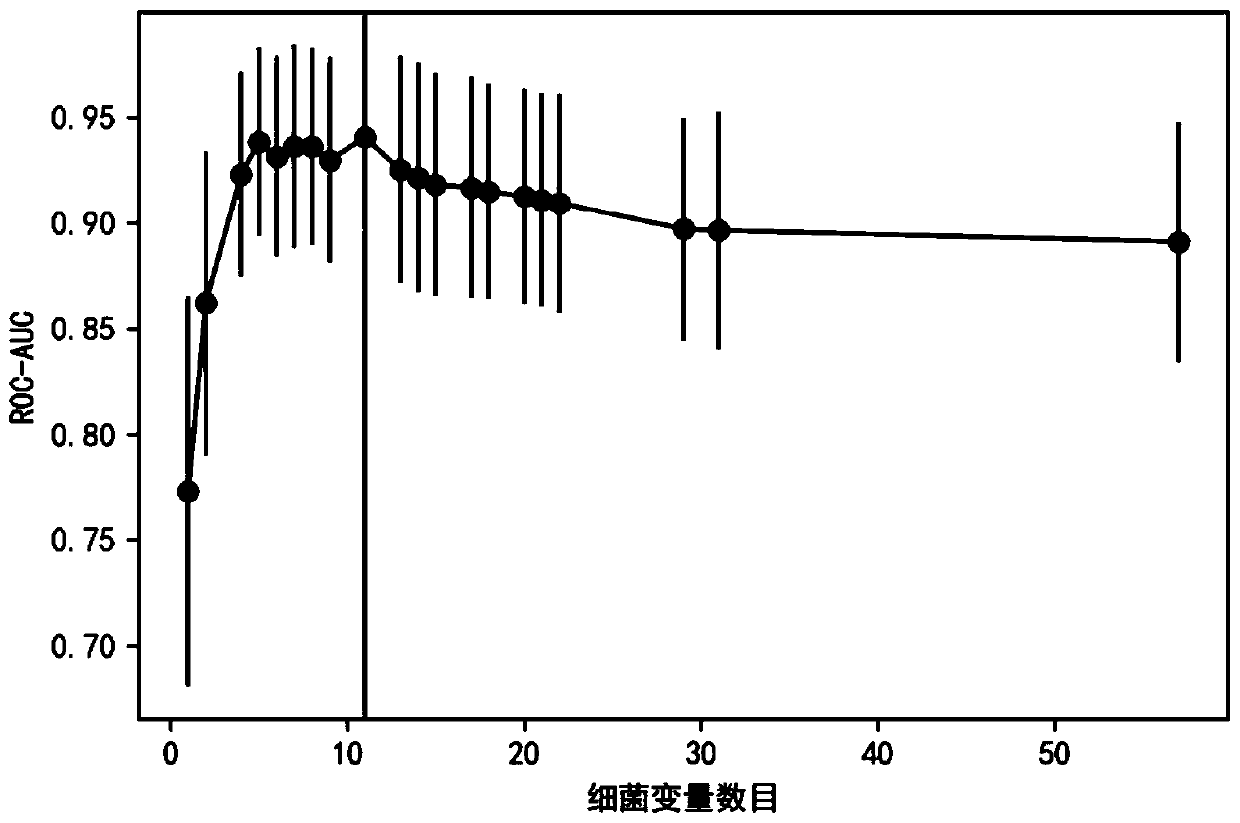Microbial marker of colorectal cancer and application of marker
A technology for colorectal cancer and microorganisms, applied in the field of microorganisms, can solve the problems of high experimental process and operation costs, imprecise annotations, and poor versatility, and achieve high sensitivity, reduce morbidity, and improve the effect of disease treatment
- Summary
- Abstract
- Description
- Claims
- Application Information
AI Technical Summary
Problems solved by technology
Method used
Image
Examples
Embodiment 1
[0052] Example 1 Selection of Model Algorithms
[0053] The present invention selects Xgboost as the optimal model basis through the screening and matching of a large amount of information, and the specific method is as follows:
[0054] (1) Download metagenomic sequencing data of gut microbiota of colorectal cancer and control healthy individuals from the European Bioinformatics Institute (EBI);
[0055] (2) The abundance data of different intestinal bacteria were matched according to the metagenomic data. In order to search for markers as much as possible, considering the matching between the metagenomic database and the 16S database, and considering that qPCR cannot measure species with particularly small contents, this match reached the genus level, and there were 206 bacteria at the genus level;
[0056] (3) Use machine learning to select model algorithms. Supervised learning is to generate a function through the corresponding relationship between a part of the input da...
Embodiment 2
[0062] Example 2 Bacterial selection of specific species
[0063] (1) The Xgboost model obtains the feature-importance score of the variable feature (see Figure 4 ), according to the ranking of the scores, gradually increase the number of bacterial variables to obtain the variables required for the optimal ROC-AUC (see image 3 ), the results show that the ROC-AUC value is the largest when the bacterial abundance of 11 specific species of the characteristic variable is input;
[0064] (2) Test the model, split the data into training set and test set, input the bacterial abundance of 11 specific species of the sample, input the Xgboost model, the model optimizes the parameters according to GridsearchCV, trains with the training set, and tests with the test set ;
[0065] (3) The storage model is used for colorectal cancer risk prediction of subsequent measurement data.
[0066] Depend on image 3 It can be seen that the number and combination of input variables will produc...
Embodiment 3
[0067] Example 3 Clinical validation
[0068] (1) Detection of relative abundance of intestinal microbial markers: 16S bacteria in the stools of 4 cases of intestinal cancer and 32 healthy people were sequenced to find the abundance of 11 specific species of bacteria, and input the test data into the model;
[0069] (2) Risk value output: The algorithm model after learning and training is input into the test data obtained from the experiment, and the probability between 0 (control) and 1 (suffering from colorectal cancer) is obtained, and finally the probability value of 1 (sickness) is confirmed as If the risk value is less than 0.5, it is determined as a healthy person, but if the risk value is between 0.4 and 0.5, it is recommended to carry out certain intestinal bacteria adjustment to reduce the risk of subsequent colorectal cancer. , It is recommended to carry out colonoscopy to confirm the diagnosis. For people without colon cancer, it is recommended to adjust the intest...
PUM
 Login to View More
Login to View More Abstract
Description
Claims
Application Information
 Login to View More
Login to View More - R&D
- Intellectual Property
- Life Sciences
- Materials
- Tech Scout
- Unparalleled Data Quality
- Higher Quality Content
- 60% Fewer Hallucinations
Browse by: Latest US Patents, China's latest patents, Technical Efficacy Thesaurus, Application Domain, Technology Topic, Popular Technical Reports.
© 2025 PatSnap. All rights reserved.Legal|Privacy policy|Modern Slavery Act Transparency Statement|Sitemap|About US| Contact US: help@patsnap.com



